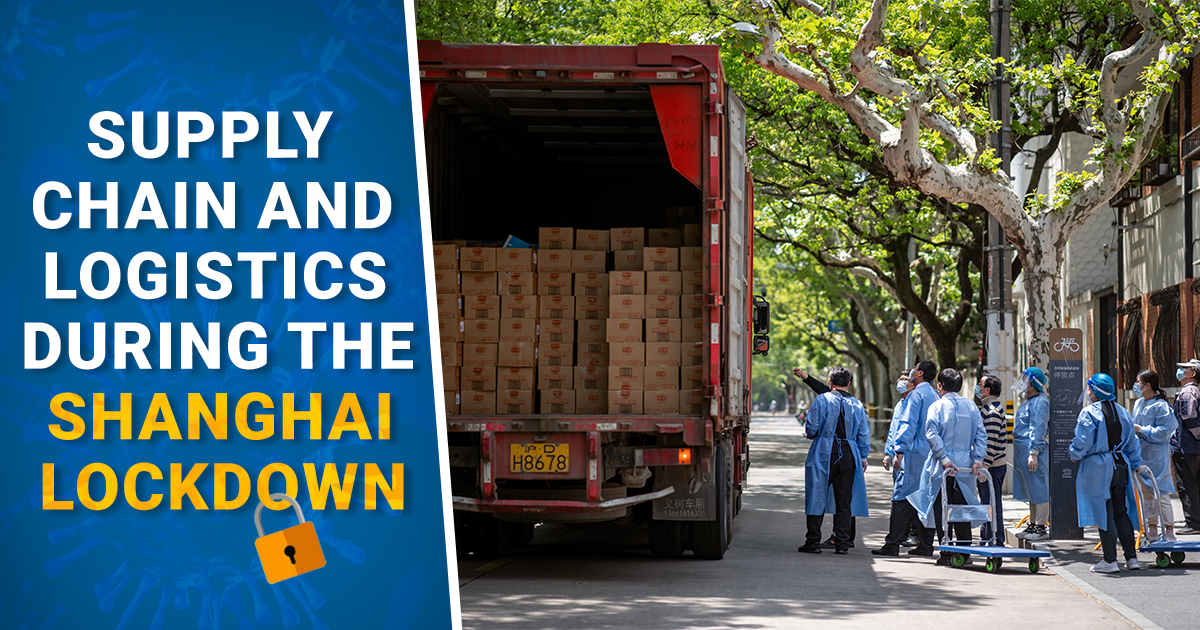
In the past weeks, the city of Shanghai in China has been placed under a strict lockdown due to a surge of, yet again, COVID-19 cases. This has had a massive effect on the city’s logistics and supply chain, as movement within and out of the city has been restricted.
Tightened Control Across Other Chinese Cities Amin Rising COVID-19 Cases In Shanghai
On Saturday, April 16, Shanghai reported new numbers of symptomatic COVID-19 cases. Other areas in China tightened restrictions as the nation continued its “dynamic clearance” strategy. China has reported 24,791 new coronavirus infections since April 15, with 3,896 symptomatic. The National Health Commission announced on Saturday that there were 20,895 asymptomatic cases.
Since the virus’s outbreak in Wuhan in late 2019, Shanghai has become the epicenter of China’s largest surge. There have been over 320,000 COVID-19 infections recorded since the virus’s outbreak began in early March. Many businesses are now struggling to get the supplies they need, and prices for goods have skyrocketed as the demand increases. The Shanghai lockdown has been prolonged, increasing uncertainty in Chinese supply chains.
The Chinese government’s determination to maintain its zero-Covid policy includes lockdowns. This puts last-mile distribution to the test. The long lockdown of Shanghai has trapped most of the city’s 25 million residents indoors for weeks. This has disrupted food delivery services and halted some people from the trade.
This has come as a shock to a country at the forefront of electronic commerce. The severity of the disruption is highlighted by the world’s highest rate of online shopping penetration.
Disruptions in Supply Chain
Logistics real estate has been all the rage since the Covid-19 epidemic began. The rise of online advancements was clear long before the virus struck. These factors have caused an increased need for adequate storage. It drove growth in the reliance on digital methods to ease transportation and logistics. These have become more obvious over the previous two years.
The pandemic’s unpredictable devastation drove more people online. It forced businesses to reconsider their operations, particularly inventory management. The greatest problem has been improving distribution networks’ resilience. This is true, especially in the final segment of a product’s journey. From manufacturer to end consumer, or “last mile,” in urban areas.
Last-mile delivery has been under fire in China this year. This is because retailers and logistics companies have developed new techniques to get products to customers within tighter deadlines. Shanghai has prolonged its shutdown. The world’s largest container port now uses more river and sea transport to deliver boxes to terminals. With the entire city under lockdown, most residents cannot leave their homes, even for food. Businesses, such as ports, can operate under “closed-loop” conditions.
Supply chains have focused on decreased trucking capacity. This caused factory and warehouse closures, causing ocean freight redirection. Ningbo, Qingdao, and Tianjin are the top three alternative ports.
Predictions for a Surge in the Philippines in May: Prepare Your Logistics
The severity of COVID-19 remains all too real, although case numbers have dropped from March to April. The Department of Health (DOH) issued a similar warning, as its experts saw a potentially significant rise in cases by mid-May. This is if Filipinos kept their guard down against the disease.
The Philippines is not immune to the outbreak of COVID-19. Like in Shanghai today, this has affected supply chains and logistics. Many businesses have been forced to close, leading to a decrease in demand for goods and services. This has led to disruptions in supply chains and delays in shipments. Also, the lockdown has increased transportation costs and labor shortages.
These factors have hurt the logistics industry in the Philippines. However, there are some steps that logistics companies can take to prepare for a possible lockdown.
First, they can develop contingency plans for disruptions in supply chains. They can also create plans for alternative routes and methods of transportation. In addition, they can increase their inventory levels to prepare for a possible increase in demand.
Taking these steps will help logistics companies to be prepared for a possible lockdown in the Philippines. By doing so, they will be able to minimize the impact of the outbreak on their operations.
Businesses need to be aware of the potential impact of COVID-19 on their operations. The outbreak has already caused disruptions in supply chains and logistics. If the situation deteriorates, businesses may need to implement contingency plans. Taking these steps now will help businesses to be prepared for a possible lockdown in the Philippines.
SEE ALSO:
